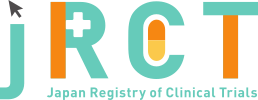臨床研究等提出・公開システム
|
Mar. 01, 2023 |
|
|
Aug. 15, 2025 |
|
|
jRCTb050220181 |
Development of periodontal tissue regeneration therapy using an autologous adipose tissue-derived multi-lineage progenitor cells (Development of periodontal tissue regeneration therapy using an autologous ADMPC) |
|
Development of periodontal tissue regeneration therapy using an autologous adipose tissue-derived multi-lineage progenitor cells (Development of periodontal tissue regeneration therapy using an autologous ADMPC) |
|
|
Yamashiro Takashi |
Takedachi Masahide |
||
Osaka University Graduate School of Dentistry |
||
1-8 Yamada-oka, Suita, Osaka |
||
+81-6-6879-2930 |
||
takedachi.masahide.dent@osaka-u.ac.jp |
||
Takedachi Masahide |
||
Osaka University Graduate School of Dentistry |
||
1-8 Yamada-oka, Suita, Osaka |
||
+81-6-6879-2930 |
||
takedachi.masahide.dent@osaka-u.ac.jp |
| 30 | ||
Interventional |
||
single arm study |
||
open(masking not used) |
||
uncontrolled control |
||
single assignment |
||
treatment purpose |
||
1) Patients over 20 years old at the time of consent acquisition. |
||
1) Patients who have a prosthesis that interferes with the accurate measurement of the clinical attachment level of the test site. |
||
| 20age old over | ||
| No limit | ||
Both |
||
severe periodotitis |
||
Mesenchymal Stem Cell Transplantation |
||
adipose tissue-derived multi-lineage progenitor cells |
||
After culturing and collecting adipose tissue-derived multilineage progenitor cells (ADMPCs) from the autologous adipose tissue, the person in charge of implementation or the dentist who performs regenerative medicine transplant the cells. After making a gingival sulcus incision and leaving the interdental papilla as much as possible, the gingival periosteal valve is inverted with a full-thickness valve to perform scaling and root planing. The curette uses a Gracie type scaler. ADMPCs are mixed with a carbonated apatite preparation and filled with a spartel according to the morphology of the affected alveolar bone defect. |
||
Clinical attachment level acquired 36 weeks after transplantation and its change over time |
||
1) Increase rate of new alveolar bone 36 weeks after transplantation and its change over time |
||
| Mar. 01, 2023 | |
| April. 27, 2023 | |
Suspended |
| Japan Agency for Medical Research and Development | |
| Not applicable |
| Certified Special Committee for Regenerative Medicine, Institute of Innovative Medical Technology | |
| 1-11-11 Nakatsu, Osaka, Osaka | |
+81-6-6476-8208 |
|
| reviewboard@kakushinkikou.org | |
| Approval | |
Feb. 24, 2023 |
